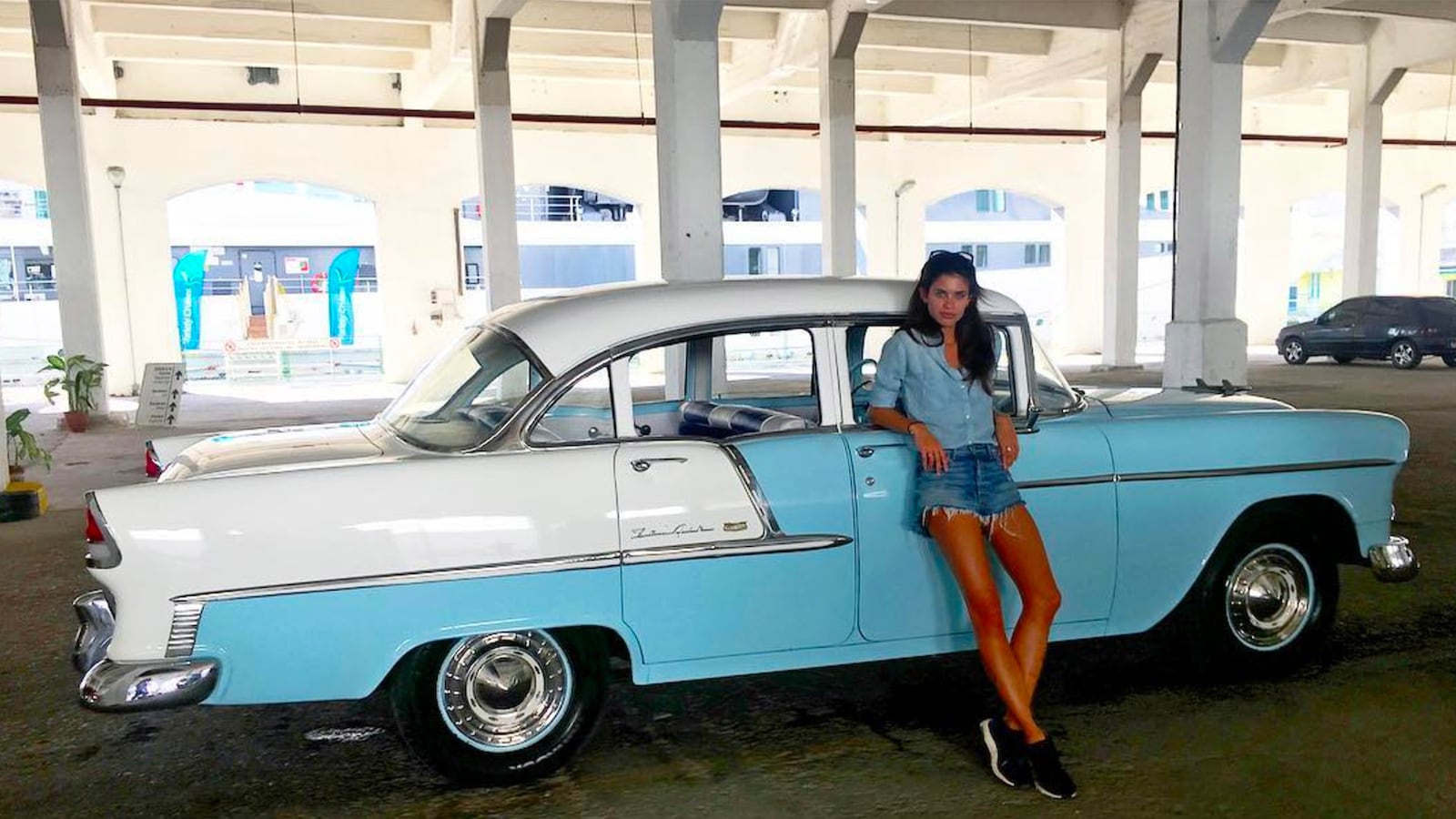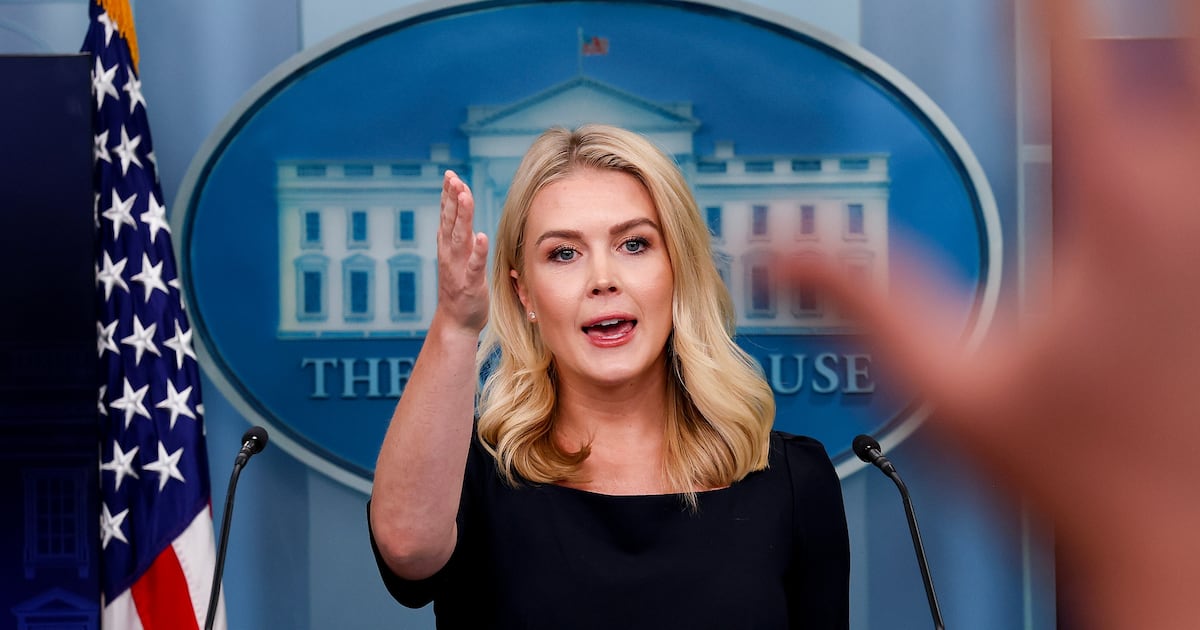During vacation in Cuba last week, Victoria’s Secret Angel Sara Sampaio posed for a photo in jean cutoffs and a light blue denim shirt next to one of the island’s old-fashioned, candy-colored cars, then shared it with her 4.5 million followers on Instagram. “When in Cuba match ur clothes with the cars,” the 25-year-old Portuguese model wrote in the photo’s caption.
The old car as photo-op has become a tourism cliché in Havana, particularly among the style-obsessed celebrities and fashion set—Madonna, Beyoncé and Jay Z, the Kardashians, Kate Moss, Naomi Campbell, Paris Hilton, and so on—who have visited the island in recent years, unable to resist the retro charm of Cuba’s 1950s Cadillacs.
And who can blame them for being seduced by the quaint authenticity of Cuba’s old cars and buildings, preserved over time and untouched by the hideousness of capitalism?
The island has seen a tourism boom since the U.S. and Cuba announced in 2014 that they would restore diplomatic ties, in part because warmer relations between the two countries have made it easier for Americans to get there, and in part because Westerners who have never been want to see it before Starbucks and McDonalds pop up all over the island.
So when the Kardashians flew down with their reality-TV show’s camera crew last May, two months after President Obama visited Cuba (and became the first American president to do so since Calvin Coolidge), even they found the top poverty-tourism destination rather charming.
Taking in the sights from the back of a 1957 Chevrolet convertible, Khloe Kardashian marveled at how friendly and close to nature Cubans are (“the goats are, like, people’s dogs!”) and told her chauffeur she enjoyed the “real life” on display during their sightseeing tour.
It was a spectacular moment of irony, of course, given that “real life” for most Cubans is a daily grind of hustling for money and food, including a number of young women who prostitute themselves to geriatric tourists. In an interview with The New York Times after Fidel Castro’s death, one older Cuban man who lives on a $12 monthly pension said that much of the island’s food supply is being funneled into the tourism sector—and that he’d recently been forced to sell two antique lamps in order to pay for his next few meals. Affluent Westerners may be upset by the idea of fast-food chains invading Cuba, but Cubans themselves might not mind it so much (fast food is better than no food, after all).
While many Cubans are hopeful that their country will change under President Raúl Castro now that his elder brother has died, Amnesty International’s 2015/2016 report on Cuba paints a grim picture of life for its citizens: “Government critics continued to experience harassment, ‘acts of repudiation’ (demonstrations led by government supporters with participation of state security officials), and politically motivated criminal prosecutions. Reports continued of government critics, including journalists and human-rights activists, being routinely subjected to arbitrary arrests and short-term detention for exercising their rights to freedom of expression, association, assembly, and movement.”
But who needs freedom of expression and economic freedom when life in Cuba is so adorably simple? Tilda Swinton said as much, exposing her own ignorance, when she attended Chanel’s Resort 2017 fashion show there in May (the Kardashians had originally planned their trip around the show as well, since Kendall Jenner was supposed to walk in it).
“Look, capitalism is visiting and the Cubans are doffing their caps,” Swinton told New York magazine, “but my sense is that this is a very healthy country and any notion that they need saving by a moribund capitalist country from across the sea is just absurd.”
It’s hardly an uncommon sentiment among certain segments of the left, generous with their praise of Cuba’s free health care and education systems, along with its high literacy rates. Never mind that the number of poorly compensated Cuban medical professionals who defected to the U.S. reached a record high in 2015, or that Cuba’s literate people aren’t free to read what they want.
The irony of showing a luxury-fashion collection in a country isolated from modern consumerism was apparently lost on Karl Lagerfeld, who presented his Chanel Resort 2017 collection in Havana last May. He noted that while there was no “fashion” as Westerners know it in Cuba, there was plenty of singular style to be fetishized. “Here, you can really wear jewelry,” he told New York. “Here you can smile whenever you want. It is adorable.”
Toothless smiles are considerably less “adorable” in Paris or New York. But in Old Havana, they’re as charming as the city's decrepit neo-classical buildings and colorful cars.
Despite fetishizing Cuba’s poverty, Lagerfeld redeemed himself when he admitted: “But of course, what do I know about Cuba? It is very childish, my idea.”
To be sure, there’s nothing wrong with Lagerfeld bringing couture to Cuba, along with a troop of fashion A-listers and stars from Gisele Bündchen to Vin Diesel. Nor is there anything wrong with Western tourists Instagramming photos of themselves next to pastel pink Chevrolets.
Bringing different cultures to Cuba is of course a good thing, and tourism is good for the economy—though Cuba’s economy can’t survive on tourism alone and has suffered since its regional benefactor, Venezuela, has been in economic freefall.
“For the first time in decades, Cubans are dealing with power outages and transportation shortages,” NPR reported in September. Tourism is up, but “they just don’t have the infrastructure to really get at all that money.”
There’s nothing wrong with the exchange of ideas through high-fashion shows, but Cuba needs goods—not couture—to be exchanged in order to build up its infrastructure.
The only problem with the Kardashians et al. seeing the island and its old cars as Instagram bait is that it casts Cuba in a patina of sentimental filters, obscuring the realities of life there.
Cuba is a beautiful place, but the fancy tourists don’t need a vacation on the island as much as they need a lesson—and they’re not going to get it on the tourist route advertised in brochures.






